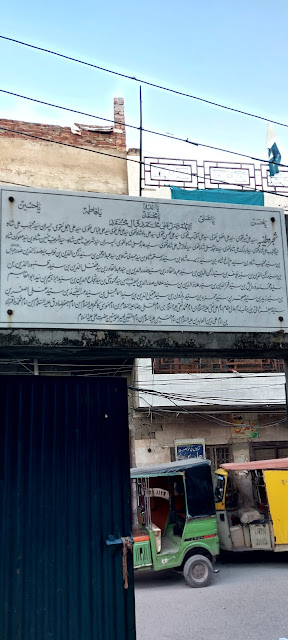18th August 2022
(All images copyright 2022 Mirza Ali Usman Baig, text written in this article is the author's Research and shouldn't be reproduced)
Sodhiwal, a locality in the suburbs of Lahore, is home
to a remarkable 16th-century mausoleum believed to belong to Hazrat Syed
Sadruddin, a prominent figure from the Sadaat family of his time. Constructed
in 1570 AD, this mausoleum stands amidst the surrounding modern developments,
preserving its historical significance.
During the reign of Jalal-ud-din Muhammad Akbar
(1542-1605), the third Mughal Emperor of Hindustan, Syed Saheb was held in high
esteem and bestowed with the title 'Sadar Jahan,' meaning the King of the
World.
Architecturally, the tomb follows a design similar to
other Mughal structures found in Lahore. It features a hexagonal structure
crowned with a dome. Each side is adorned with a four-corner arch, and a series
of niches decorate the corners. Inside the tomb, squinches are present in the
corners, serving as a common technique for supporting the dome. Originally, the
tomb was situated on higher ground, but over time, it came to align with the
road level.
In the latter half of the 18th century, Lahore was
ruled and divided among three Sikh Chieftains. Unfortunately, during this
period, the tomb suffered significant damage. One of the Sikh Chieftains, Sobha
Singh, took control of the western part of Lahore and utilized the marble from
the tomb for constructing his fort at Zeb un Nisa garden, named Nawan Kot (a
new fort).
Presently, the exterior of the mausoleum has been
unsightly disfigured with plaster and tile work. The original frescoes and
floral artwork are no longer visible. Despite these alterations, the mausoleum
functions more as a shrine, attracting followers who gather here every Thursday
to recite the Quran and offer prayers.

.heic)



No comments:
Post a Comment